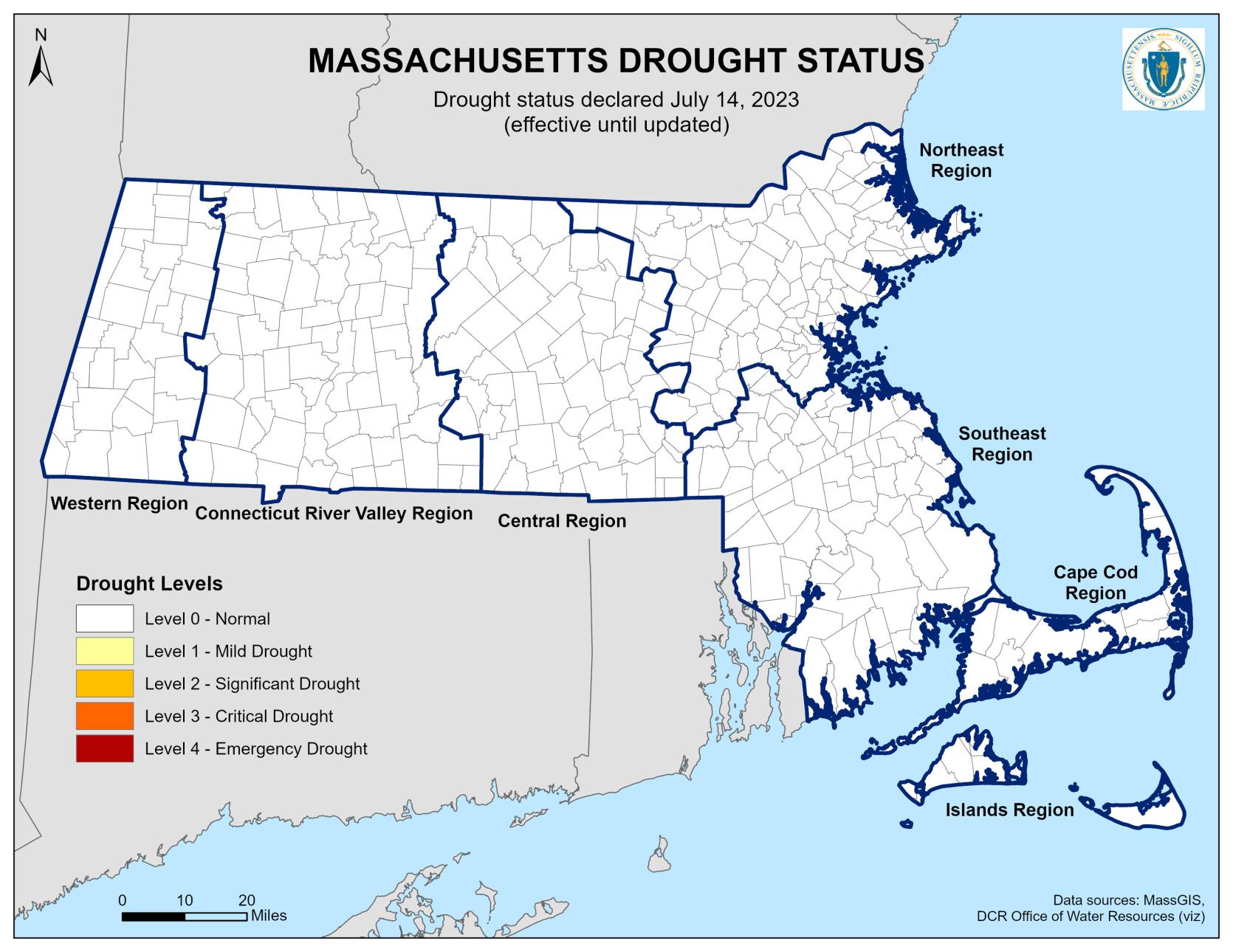- Executive Office of Energy and Environmental Affairs
- Drought Management Task Force
Media Contact
Danielle Burney, Deputy Communications Director

BOSTON — Energy and Environmental Affairs (EEA) Secretary Rebecca Tepper today declared drought conditions return to normal following above-normal rainfall for the month of June. All seven regions are at a Level 0-Normal Conditions, including the Western and Cape Cod Regions, which were previously declared at a Level-1 Mild Drought. The declarations are the result of a recommendation issued from a recent meeting of the Drought Management Task Force, comprised of state and federal officials and other entities.
“After a week of devastating floods in Western Massachusetts, it should not come as a surprise that the drought has lifted,” said EEA Secretary Rebecca Tepper. “In recent months, we’ve seen droughts, flooding, and wildfire smoke across our region. The climate crisis is very much here. The Healey-Driscoll Administration is focused on addressing these impacts on all fronts – from disaster response to water conservation efforts, to a swift transition to clean energy. We continue to monitor water levels closely as weather becomes more extreme.”
The month of June and the beginning of July have brought above-normal rainfall and near to below-normal temperatures across the state. State officials expect above-average precipitation and near to slightly above-average temperatures for the rest of July. Normal Conditions, as outlined in the Massachusetts Drought Management Plan, recommends that overall water efficiency practices and preparedness actions such as water conservation and emergency planning efforts continue at the local level and that state and local agencies work to review, assess, and improve responses and actions implemented during the drought.
With the declaration of Normal Conditions, the Drought Management Task Force will not meet again until a region in the state is experiencing drought conditions. However, state agencies will continue to monitor and assess conditions across Massachusetts. For further information on water conservation and what residents and communities can do, please visit EEA’s Drought page and water conservation page.
###